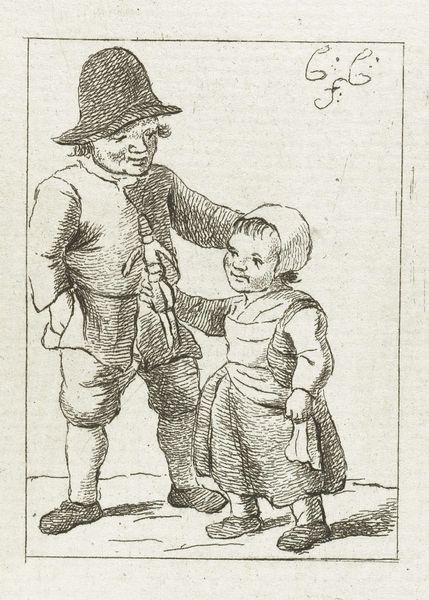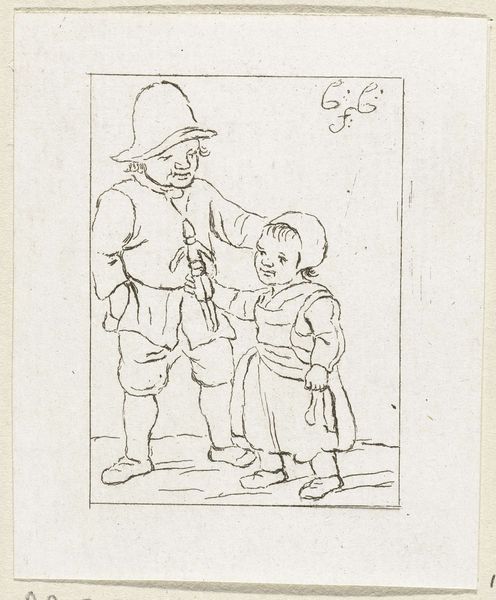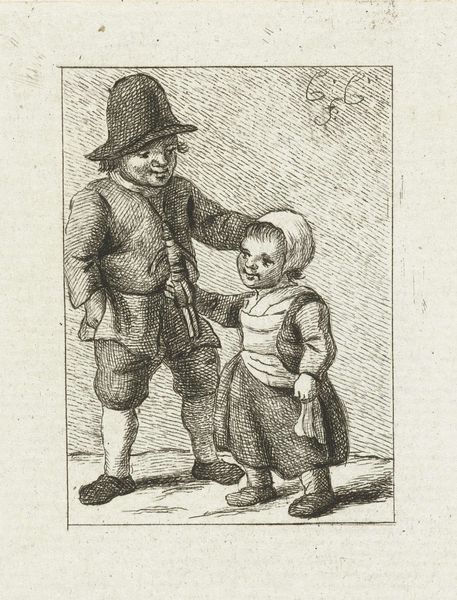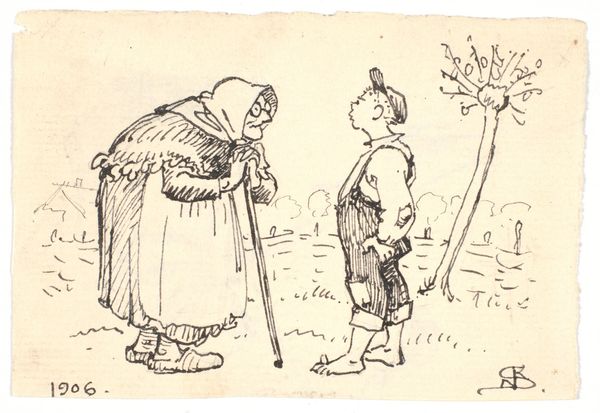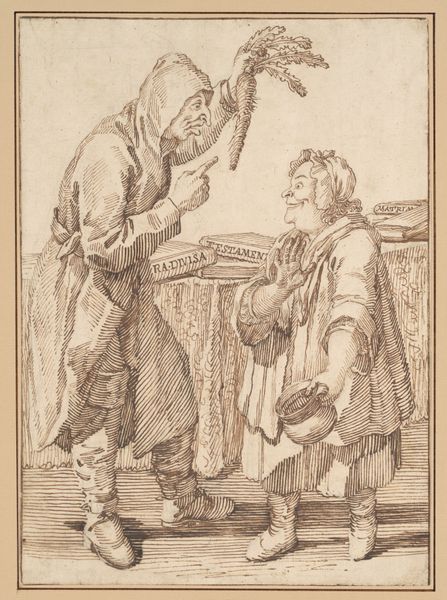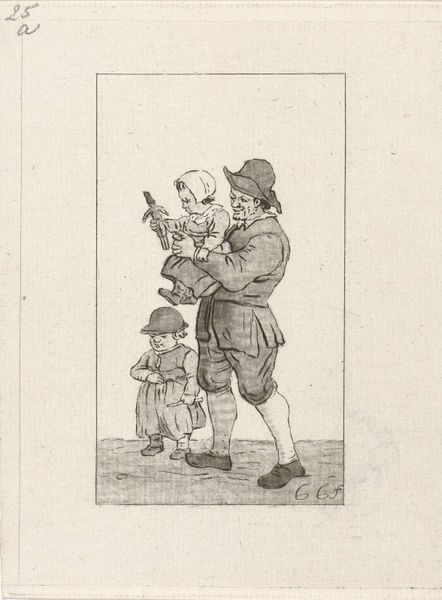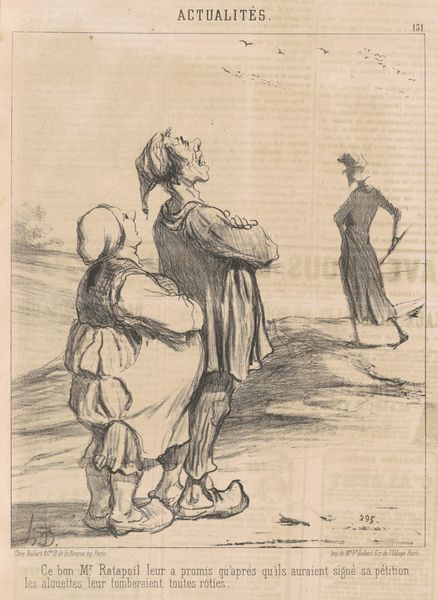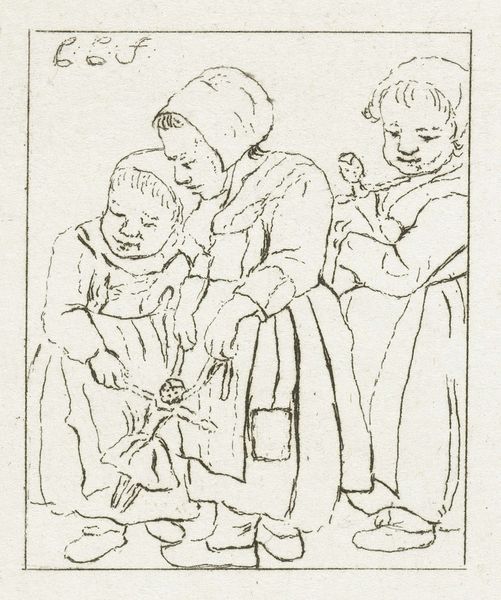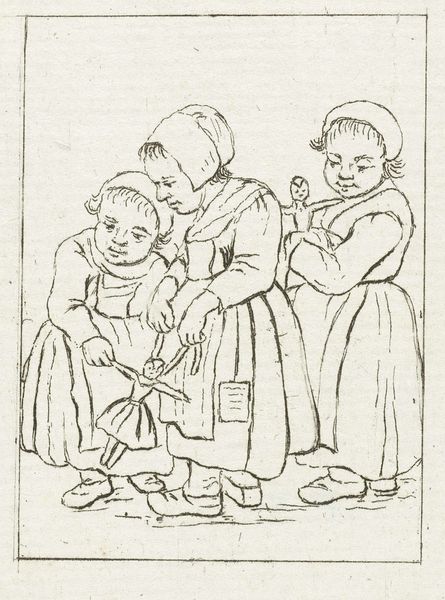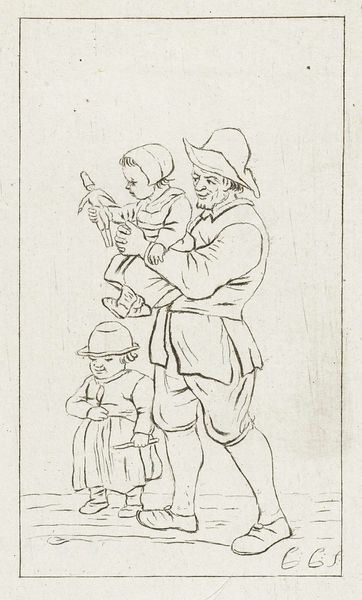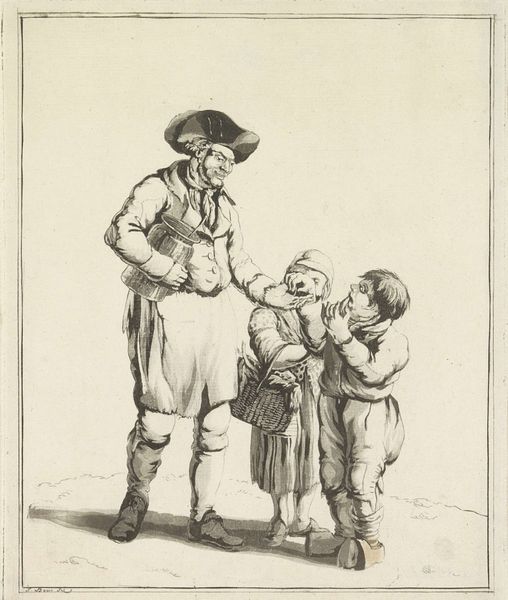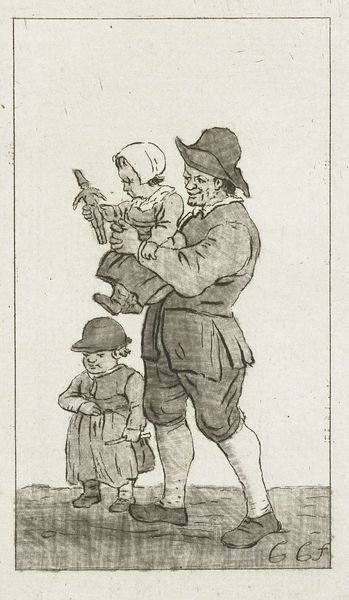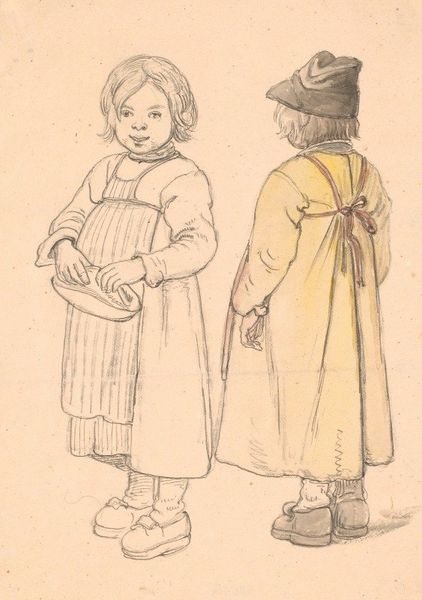
Dimensions: width 56 mm, height 71 mm
Copyright: Rijks Museum: Open Domain
Curator: Before us, we have a drawing titled "Boy and Girl with Doll" by Pieter de Mare, dating from around 1777 to 1779. It's a pen drawing. Editor: It has such an intriguing raw quality, doesn't it? Almost childlike. The figures feel very direct, devoid of romantic idealization—they're of the earth. Curator: De Mare, though a capable artist, never quite achieved widespread recognition. He spent most of his career producing genre scenes and portraits, works that reflected the lives of everyday Dutch citizens. One could say he documented, with this drawing, the daily labor division that would be reproduced throughout the children's lives. Editor: Exactly! We can analyze that the seemingly simple scene carries within it these complexities, of representation and power. Look at the clothing—practical, sturdy, made for work, not leisure. It suggests a certain social class, a connection to manual labor. It really contextualizes childhood and family structures. Curator: The means of producing an image like this, of course, also points to a particular type of patronage. Unlike oil paintings made for the wealthy, the cheaper pen and ink drawing was popular in middle class Dutch homes in this period. Editor: And the doll itself! A manufactured object, representative of both play and early gendered social training. Who made this doll and from what material? We are talking about emerging markets in mass manufacturing… Curator: It could be wood or maybe linen. In these lines, we get something beyond mere aesthetics. I keep thinking about what was being traded— between artist and subject, or the cultural assumptions we bring to the exchange across two centuries. Editor: Absolutely. And recognizing these subtle markers helps us to be conscious of the conditions and biases within the sketch itself. We are left understanding more deeply our role as contemporary interpreters. Curator: Indeed. I leave with so many more questions regarding class and labor in 18th-century Dutch families! Editor: As do I; the best art often challenges our assumptions and encourages continued investigation.
Comments
No comments
Be the first to comment and join the conversation on the ultimate creative platform.
